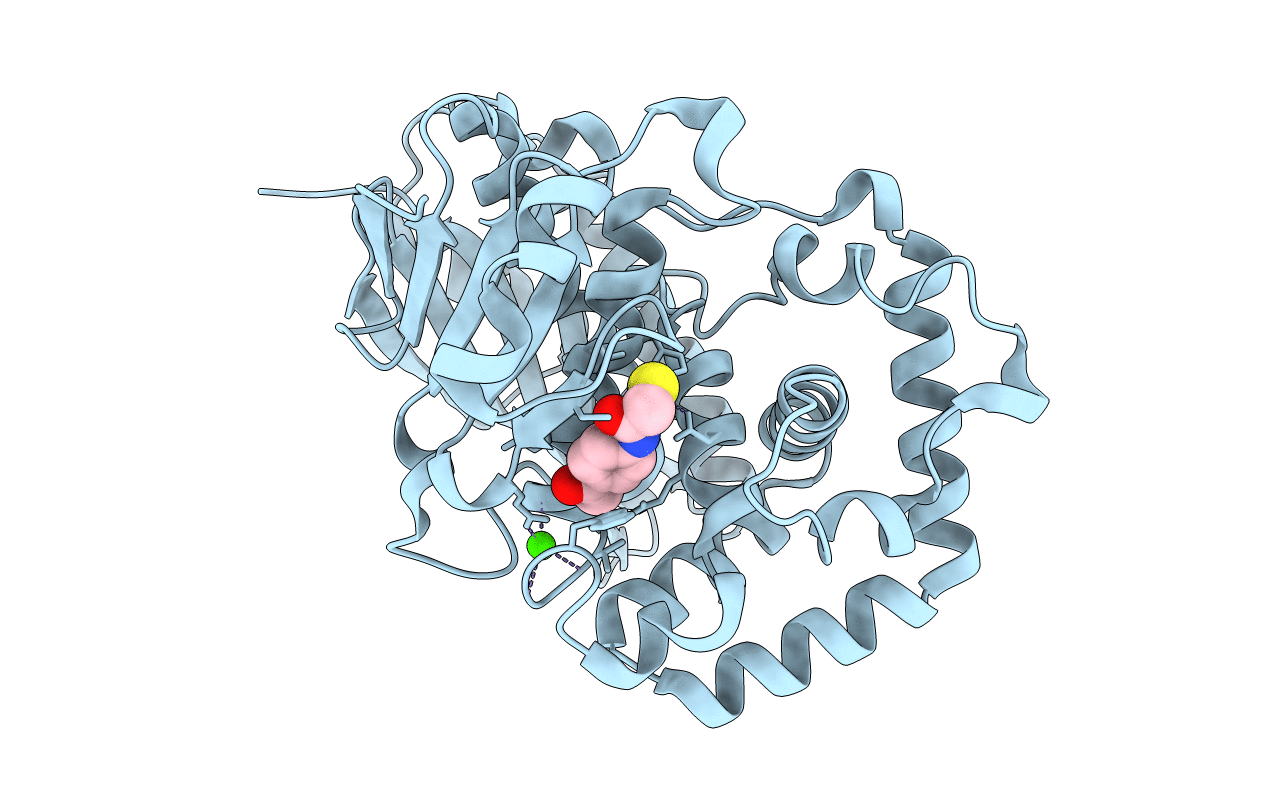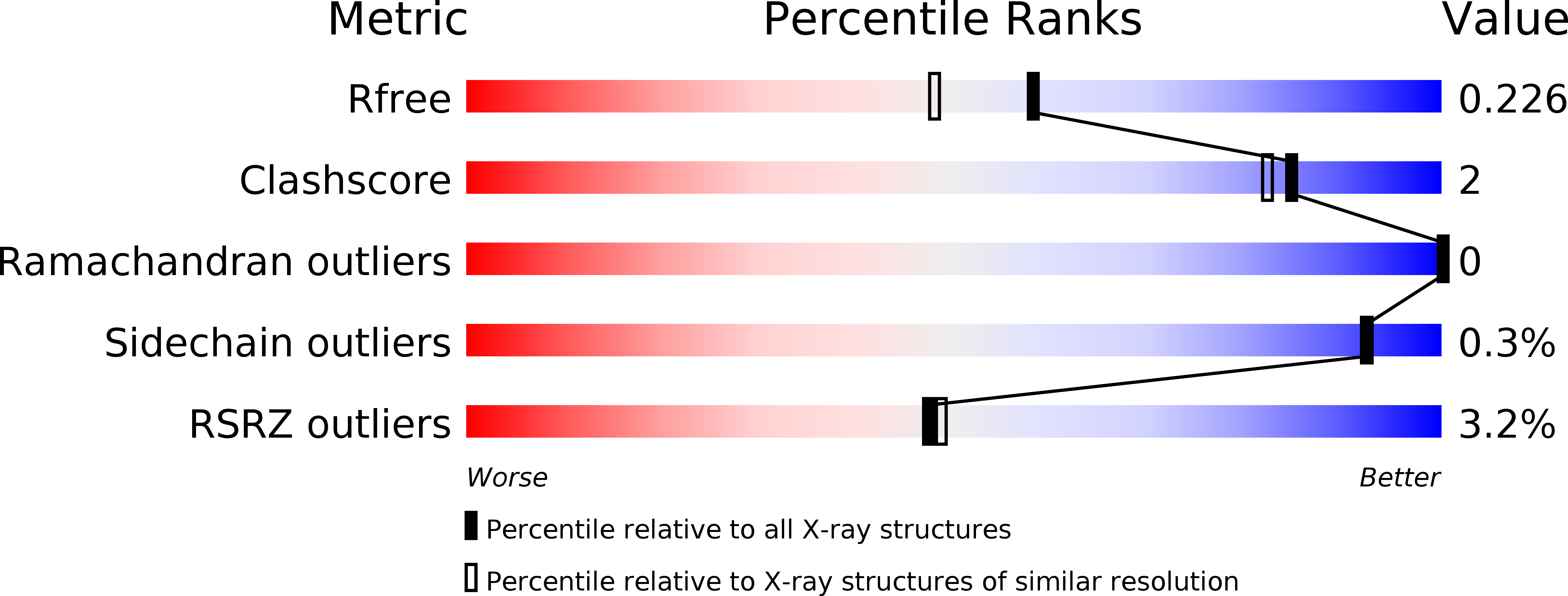
Deposition Date
2017-06-08
Release Date
2018-01-31
Last Version Date
2024-01-17
Entry Detail
PDB ID:
5O7E
Keywords:
Title:
Crystal structure of the peptidase domain of collagenase H from Clostridium histolyticum in complex with N-aryl mercaptoacetamide-based inhibitor
Biological Source:
Source Organism:
Hathewaya histolytica (Taxon ID: 1498)
Host Organism:
Method Details:
Experimental Method:
Resolution:
1.87 Å
R-Value Free:
0.22
R-Value Work:
0.19
R-Value Observed:
0.19
Space Group:
P 1 21 1


